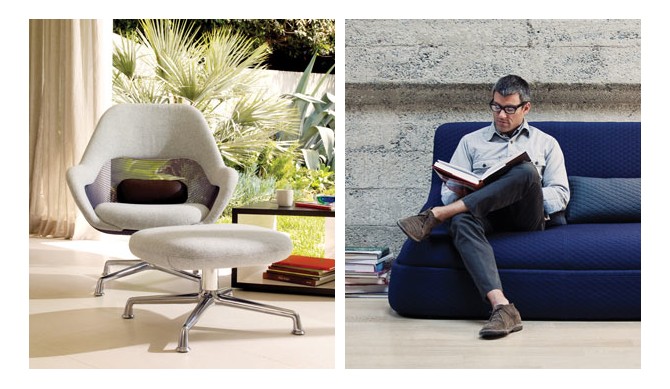
Farewell...
Workspring has chosen not to renew its lease in downtown Chicago. It has been our team’s pleasure to provide thousands of training, brainstorming and strategizing experiences to companies across the globe, and we are grateful to all of our customers. If you need to contact us, email info@workspring.com.
Ten Tips on Bringing Wellbeing to Work

.
Environments that combine comfort, function and emotional satisfaction can inspire teams of people to do their best work as well as increase productivity, satisfaction and engagement. Based on their research, Coalesse offers these tips for bringing wellbeing into the workplace.
BLUR THE LINES.
Spaces that blur the boundaries between work and home create a comfortable environment, invite people to relax and think outside the box.
LET IT BE.
Work can happen anywhere— a few minutes here, a few hours there. With many ways to get things done, the “right” way is to let people choose their own work destinations.
LOOSEN UP.
For people to work comfortably feet don’t always have to be on the floor. Relaxed postures can still support their productivity.
ALLOW FOR ALONE.
Most people toggle between introverted and extroverted modes throughout their work day. Spaces that allow people to escape, ponder and disconnect support cognitive and emotional wellbeing.
ENCOURAGE ESCAPES.
A non- traditional, “third place” setting gets people re-energized and optimistic about making progress, especially if they can count on convenient access to power while they’re there.

CREATE AN UNPLUG ZONE
A space with zero connectivity to wi-fi and power will encourage people to have face time with each other, read a book or rest their eyes.
BREAK NEW GROUND.
Knowledge work is demanding and intense. Taking a break from the traditional workstation and leaning back into a lounge supports comfort and productivity.
BE MOODY.
Different work modes call for different surroundings. Some materials and colors stimulate creative thinking, others can frame the mind for contemplation and repose.
PUT NATURE TO WORK.
Bring wellbeing to the office by providing the option for people to work outside. Fresh air and natural light are refreshing, and it’s been proven that working outdoors or near natural light improves creativity, productivity and engagement.
CREATE CHOICES.
One person’s lounge can be another person’s workstation. A range of settings and support for transitions can accommodate different work styles and postures.
For full article, visit Coalesse here.